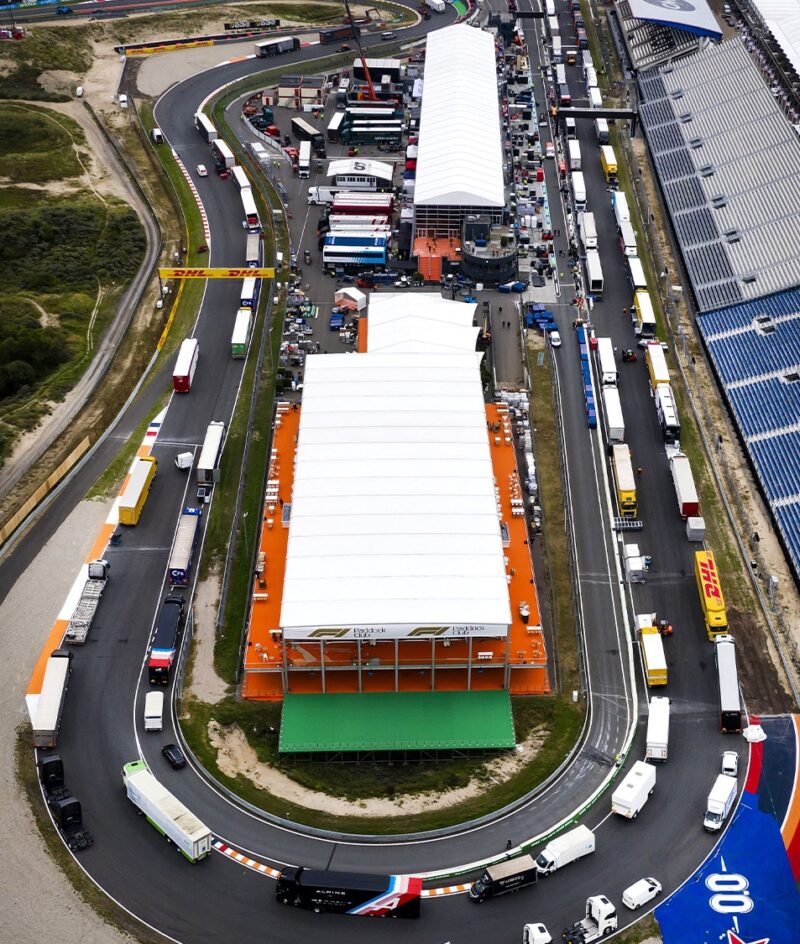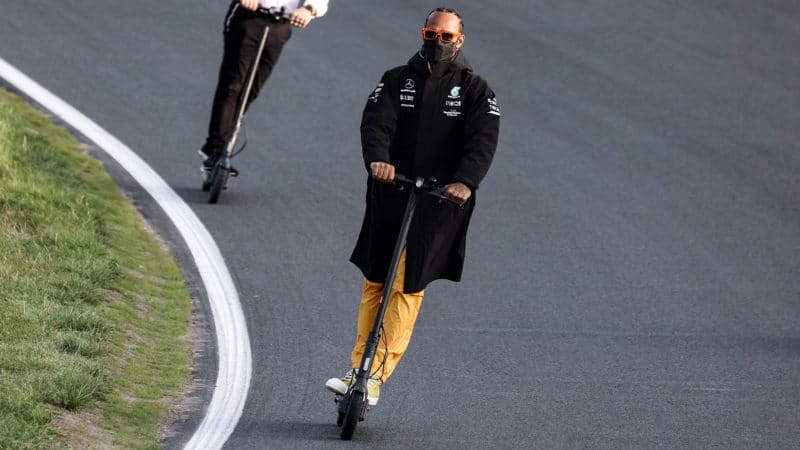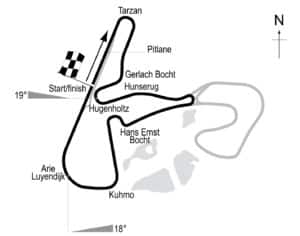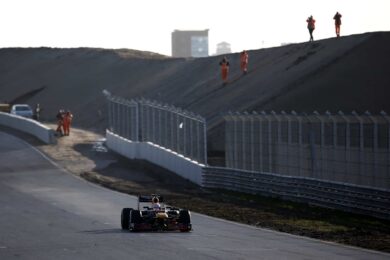“Even if they did hundreds of laps in the simulators… it’s like downhill skiing: you watch it on television and think, ‘OK, not bad’, but if you go yourself, it’s something different.
“Zandvoort is all about the perception of the driver. It’s all about what the driver is feeling and looking at because he’s not used to these geometries, he’s not used to these inclinations. He’s not used to the curves.”
The kerbs have even been painted with rectangles of differing sizes to alter drivers’ perception of speed.
“Our philosophy behind it is to try and cheat the driver’s perceptions,” said Zaffelli. “So it’s all about using the nature, using the shapes, using the geometries that we have coupled with a specific asphalt, specific techniques, all these kinds of things to put something together that is unique.
“This opens up a concept where human behaviour is at the centre. These are the best drivers in the world probably, we absolutely need to challenge them.
“We need to get back this human feeling. Just a bit like in motorcycling where the man is more important than the machine. Here we are trying to see the difference between boy and man.”

Trucks unload at Zandvoort: the orange and white kerb sections vary in size
Remko de Waal/AFP via Getty Images
The updated Zandvoort circuit is said to have opened up multiple lines through at least six of the 14 corners, offering drivers greater rewards with increased risks.
Zaffelli expects to see a variety of routes through the 180-degree Tarzan Corner at the end of the main straight, but he’ll be watching at the dramatic Hugenholtz corner, Turn Three: a bowl with banking at up to 19 degrees, which is crucial for the run through the next four corners.
He previously told Motor Sport that this section would be “scary” to drive, with drivers able to gain up to a second if they can find the fastest line.
“This track is not a track that you can learn in 20 laps, 30 laps or 50 laps,” he said.
The Italian, who worked on the resurfacing of Silverstone and is also helping with the Yas Marina redesign, said that DRS was never intended to be used in the final corner of the circuit this year, given the unique nature of the banking.

 “Here, it is about big bollocks. In the end, this is racing.
“Here, it is about big bollocks. In the end, this is racing.
